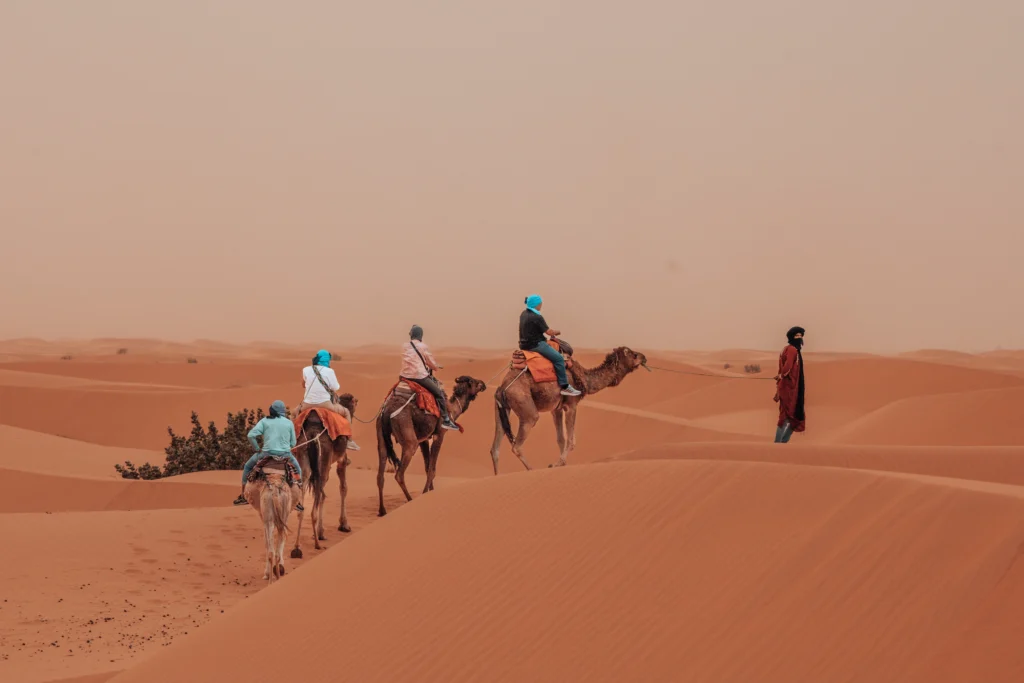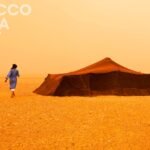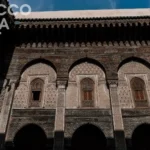The Ultimate Guide: Best Time to Visit Morocco for an Unforgettable Experience
Morocco is a land of contrasts, where the ancient meets the modern, and the desert meets the Atlantic Ocean. With its rich history, vibrant culture, and stunning landscapes, it’s no wonder that Morocco is a top destination for travelers from around the world. But when is the best time to visit Morocco? Whether you’re planning a luxury trip, a budget-friendly adventure, or a cultural immersion, understanding the best time to visit Morocco is crucial for an unforgettable experience.
In this comprehensive guide, we’ll explore the optimal times to visit Morocco, taking into account the weather, crowds, and cultural events. So, pack your bags and get ready to discover the best time to explore this enchanting country!
Table of contents
Morocco’s Climate: A Brief Overview

Morocco’s climate varies significantly depending on the region you plan to visit. The country is divided into several climatic zones, including the Atlantic coast, the Rif Mountains, the Atlas Mountains, the Sahara Desert, and the interior plains. Here’s a brief overview of what to expect in each region:
- Atlantic Coast (Casablanca, Rabat, Essaouira): Mild temperatures throughout the year, with cooler winters and warm summers. The coast enjoys a Mediterranean-like climate, with sea breezes that keep the temperature moderate.
- Rif Mountains and Atlas Mountains: Cooler temperatures, especially in the higher elevations. Winters can be cold, with snowfall in the higher peaks, while summers are mild and pleasant.
- Sahara Desert (Merkala, Zagora): Extreme temperatures, with scorching hot summers and cool winters. The desert is best visited during the cooler months, from October to April.
- Interior Plains (Fes, Marrakech, Ouarzazate): Hot summers and mild winters. The interior can get very hot during the summer months, with temperatures often exceeding 100°F (38°C).
Spring: March to May
Why Spring is a Great Time to Visit Morocco
Spring is one of the best times to visit Morocco, offering mild temperatures, blooming landscapes, and fewer crowds compared to the peak summer season. Here’s what you can expect:
- Weather: Spring in Morocco is characterized by mild temperatures, with average highs ranging from 68°F to 77°F (20°C to 25°C). The skies are generally clear, and rainfall is minimal, making it an ideal time for outdoor activities.
- Flora and Fauna: The country comes alive with vibrant colors as flowers bloom, and the landscapes are lush and green. The Atlas Mountains are particularly beautiful during this time, with cherry blossoms and other flora in full bloom.
- Cultural Festivals: Spring is a time of celebration in Morocco, with several cultural festivals and events taking place. The popular Fes Festival of World Sacred Music usually takes place in June, but the lead-up to the festival is filled with cultural activities.
- Tourist Crowds: Spring is shoulder season in Morocco, meaning fewer tourists compared to the summer months. This is ideal if you prefer a more authentic and less crowded experience.
What to Do in Morocco During Spring
- Explore the Atlas Mountains: Hike through the lush trails, visit traditional Berber villages, and enjoy the stunning mountain scenery.
- Visit the Rose Valley: In spring, the valleys around El Kelaa M’Gouna are filled with blooming roses, making it a photographer’s paradise.
- Attend Cultural Festivals: Immerse yourself in Morocco’s rich cultural heritage by attending local festivals and events.
Summer: June to August
Why Summer is Still a Viable Option
While summer in Morocco can be hot, especially in the interior regions, it’s still a viable option for those who want to experience the country’s vibrant culture and bustling markets. Here’s what to expect:
- Weather: Summer temperatures in Morocco can be quite high, especially in the interior regions. Average highs range from 86°F to 104°F (30°C to 40°C). However, the coastal regions remain relatively cool due to the sea breezes.
- Tourist Crowds: Summer is the peak season in Morocco, with crowds flocking to popular tourist destinations. If you’re looking for a lively atmosphere, summer is the time to visit.
- Cultural Festivals: Morocco’s most famous festival, the Gnaoua World Music Festival in Essaouira, takes place in June. This is a must-see event for music lovers.
- Beaches: The Atlantic coast offers some of the best beaches in Morocco, and summer is the perfect time to enjoy water sports, sunbathing, and relaxing by the sea.
What to Do in Morocco During Summer
- Explore Marrakech: Experience the vibrant energy of Marrakech, with its bustling markets, vibrant souks, and stunning architecture.
- Visit the Sahara Desert: While the desert can be hot during the day, the cooler evenings make it an excellent time for desert tours and stargazing.
- Attend the Gnaoua Festival: If you’re a music enthusiast, don’t miss the Gnaoua World Music Festival in Essaouira.
Autumn: September to November
Why Autumn is a Fantastic Time to Visit Morocco
Autumn is another excellent time to visit Morocco, with mild temperatures, fewer crowds, and stunning landscapes. Here’s what to expect:
- Weather: Autumn in Morocco is characterized by mild temperatures, with average highs ranging from 72°F to 82°F (22°C to 28°C). The skies are generally clear, and rainfall is minimal.
- Tourist Crowds: Autumn is shoulder season in Morocco, meaning fewer tourists and lower prices. This is an ideal time for a more relaxed and authentic experience.
- Cultural Festivals: While not as packed as spring and summer, autumn still offers several cultural events and festivals.
- Flora and Fauna: The landscapes are still green and vibrant, especially in the mountainous regions, making it an excellent time for hiking and nature exploration.
What to Do in Morocco During Autumn
- Hiking in the Atlas Mountains: Enjoy the mild autumn temperatures while hiking through the stunning trails of the Atlas Mountains.
- Explore the Imperial Cities: Visit Fes, Marrakech, Meknes, and Rabat, where the cooler temperatures make exploration more comfortable.
- Attend the Marrakech International Film Festival: If you’re a film buff, don’t miss the Marrakech International Film Festival, usually held in November.
Winter: December to February
Why Winter is a Unique Time to Visit Morocco
While winter in Morocco may not be the first thing that comes to mind for a beach vacation, it offers a unique experience for those willing to explore. Here’s what to expect:
- Weather: Winter in Morocco is mild, with average highs ranging from 61°F to 68°F (16°C to 20°C) in the coastal regions, and cooler temperatures in the mountains. Snow is common in the higher elevations of the Atlas and Rif Mountains.
- Tourist Crowds: Winter is the low season in Morocco, meaning fewer tourists and lower prices. This is an ideal time for a more peaceful and authentic experience.
- Cultural Festivals: While there are fewer festivals in winter, it’s still a great time to experience Morocco’s rich cultural heritage.
- Snow Activities: For snow enthusiasts, the Atlas Mountains offer skiing and snowboarding opportunities at resorts like Oukaimeden.
What to Do in Morocco During Winter
- Explore the Sahara Desert: Winter is an excellent time to visit the Sahara Desert, with cooler daytime temperatures and stunning starry nights.
- Visit the Ski Resorts: If you’re a snow lover, head to the Atlas Mountains for skiing and snowboarding.
- Relax on the Beach: The Atlantic coast remains mild in winter, making it a great destination for a beach getaway.
Conclusion: When to Visit Morocco
Choosing the best time to visit Morocco depends on your preferences and what you want to experience. Here’s a quick recap:
- Spring (March to May): Ideal for mild weather, blooming landscapes, and cultural festivals.
- Summer (June to August): Perfect for experiencing the vibrant culture, attending music festivals, and enjoying the beaches.
- Autumn (September to November): Great for hiking, exploring the imperial cities, and enjoying mild temperatures.
- Winter (December to February): Perfect for snow activities, desert adventures, and a more peaceful experience.
No matter when you choose to visit, Morocco offers an unforgettable experience with its rich history, vibrant culture, and stunning landscapes. So, start planning your trip today and discover the magic of this enchanting country!
FAQs:
Marrakech is beautiful year-round, but spring and autumn are the best times to visit due to mild temperatures and fewer crowds.
The Sahara Desert is best visited from October to April when temperatures are cooler.
Summer in Morocco can be hot, especially in the interior regions, with temperatures often exceeding 100°F (38°C). However, the coastal regions remain relatively cool.
Spring and autumn are the best times for hiking in the Atlas Mountains, with mild temperatures and fewer crowds.
While there are fewer festivals in winter, you can still experience Morocco’s rich cultural heritage through local events and traditions.












